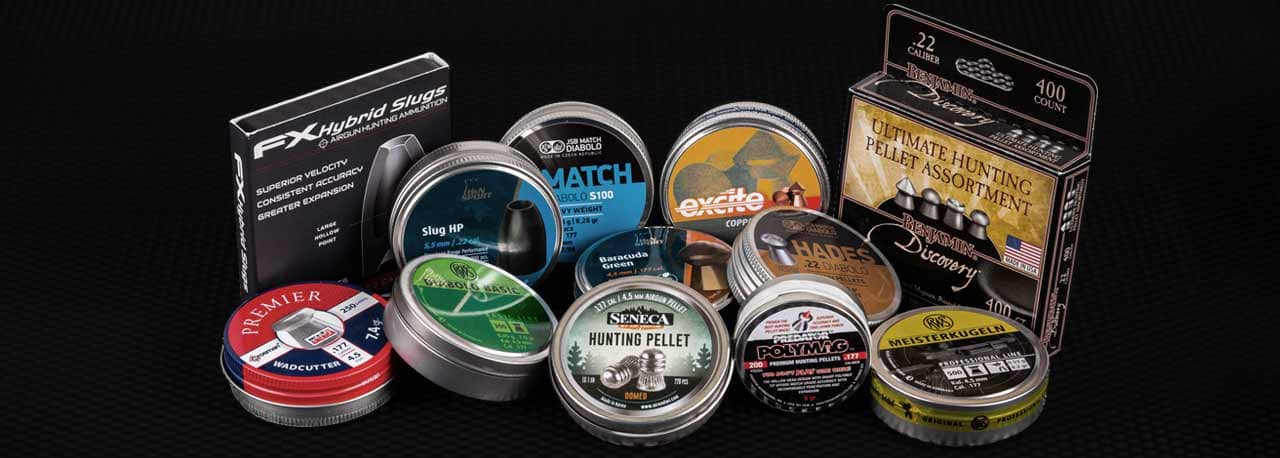When it comes to air gun ammo, understanding the basics is essential for making informed choices. Various types of ammo are available, each with its characteristics and uses.
Common Types & Shapes
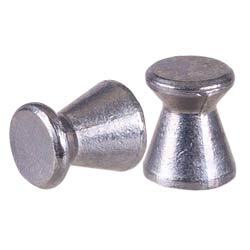
Wadcutter Pellets
- Distinctive flat nose
- Top choice for target shooting and plinking under 25 yards
- Produces clean, precise holes in paper targets
- Exceptional accuracy aids in skill refinement
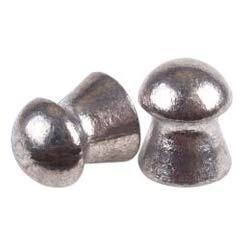
Domed Pellets
- Best for long-range shooting, hunting, and general shooting
- Streamlined aerodynamic design
- Ensures consistent, accurate shots over distances
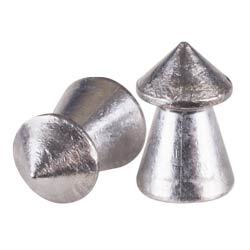
Pointed Pellets
- Ideal for handling pesky critters
- Sharp tip ensures maximum penetration
- Efficient for short-range pest control
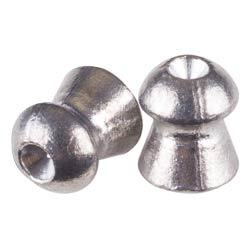
Hollow Point Pellets
- Designed for maximum stopping power
- Expands upon impact, creating larger wound channels
- Ideal for hunting
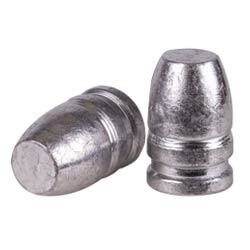
Slugs
- Combination of power and precision
- Heavier weight ensures energy retention
- Exceptional accuracy for medium to long-range shots
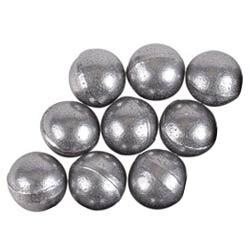
BBs
- Perfect for beginners and casual shooters
- Affordable and widely available
- A staple choice for recreational shooters
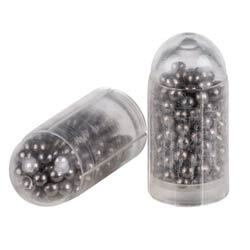
Shotgun Shells
- Great for hunting small game on the run
- Perfect for game bird hunting
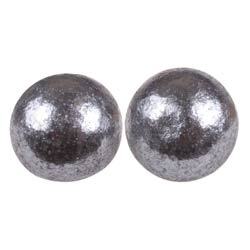
Round Ball Pellets
- Often used in vintage air guns and muzzleloaders
- The spherical shape ensures reliable shooting and deep penetration
- Suited for leisure and recreational shooting
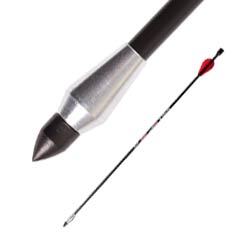
Arrows
- Fusion of archery and air gun shooting
- Provides a unique shooting experience
- Highly accurate, suitable for large game
Choosing the Right Air Gun Ammo
It's important to understand your air gun to choose the right ammo. Different air guns use different ammo. The most common types of pellets are pointed, domed, and wadcutter. Knowing the requirements of your air gun will help you make an informed decision. You also want to consider what your purpose is.
Shooting Purposes
Each shooting purpose needs ammo with different characteristics. So, each ammo type complements the shooting purposes it was designed for. The shape and material influence its trajectory, penetration, and impact, affecting its suitability for specific activities.
Target Shooting
Wadcutter or domed pellets each offer distinct advantages for target shooting.
- Wadcutters, with their flat top, cleanly cut through paper targets, leaving very distinct holes that are easy to measure. This clarity is paramount in competitive environments where a millimeter can mean the difference between a win and a loss.
- Domed pellets have an aerodynamic shape that minimizes resistance, facilitating a flatter trajectory over extended distances, which helps it excel in long-range target shooting.
Plinking and Recreational Shooting
Domed pellets and round balls offer versatility and are cost-effective ammo options for plinking and recreational shooting.
- Domed pellets are valued for their adaptability and precision, attributed to their aerodynamics. They are effective over diverse distances and provide a consistent and satisfying impact on various targets, enhancing the overall shooting enjoyment.
- Round balls are cherished for their simplicity and cost-effectiveness. Their uncomplicated design translates to easy loading and firing, ensuring that shooters can focus on enjoying the activity.
Hunting
Domed, pointed pellets, hollow points, arrows, shotshells, and slugs have advantages for hunting various game types in different conditions.
- Domed pellets deliver a combination of penetration and impact, ensuring effective kills against small and medium game and pests.
- Pointed pellets stand out for their penetration. This makes them ideal for small game with thick hides. Couple their penetration with precision, and you'll strike accurately at medium range.
- Hollow points expand on impact, ensuring rapid energy transfer and extensive damage. This brings a quick end to small and medium game.
- Arrows offer a stealthy hunt. With their use in bows, crossbows, and air rifles, arrows allow for the element of surprise for close-range hunting.
- Shotshells are known for their versatility and increased probability of hits. The spread pattern is invaluable against multiple moving targets such as birds or fast-moving ground animals.
- Slugs, specialized for large game, offer massive energy transfer for immense stopping power. This ensures a quick, humane kill.
Materials
Ammo types have their own characteristics, which include the materials they are made of. When choosing your ammo, consider the material that works best for your needs.
Pellets/Slugs
Due to its dense and malleable nature, air gun pellets and slugs are predominantly made from lead. This material allows for excellent accuracy and energy transfer, making it a preferred choice for both target shooting and hunting. The heaviness of lead ensures a stable flight trajectory and maximizes impact on the target. However, some environmental concerns regarding lead have led to the exploration of alternative materials such as zinc, copper, and other frangible metals. These alternatives are ecologically friendly but come with a higher price tag and may not deliver the same level of performance.
BBs
BBs are commonly crafted from steel and coated in zinc or copper to prevent rust. They are hard and less prone to deformation, ensuring a consistent flight path and offering a satisfying experience for plinking enthusiasts. The downside to steel BBs is the potential for ricochet, requiring extra precautions during use. Biodegradable alternatives are gaining popularity for being eco-friendly, though they typically lack the sturdiness and precision of their steel counterparts.
Arrows
Bolts and arrows are typically made of carbon fiber or aluminum. Carbon fiber arrows are prized for their lightness and speed, offering shooters an edge in accuracy and distance. They are especially popular among hunters needing to deliver a swift clean shot. However, the lightweight nature can sometimes result in less penetration. Aluminum arrows, being heavier, are favored for their durability and increased penetration, making them a top pick for target shooting and hunting large game.
Weight
The weight of the ammo is another factor to consider when selecting ammo for your air gun. The weight of the projectile directly impacts its performance and accuracy.
- Lighter ammo (Under 15 grains) tends to have a flatter trajectory and higher velocity but has little energy on impact
- Heavier ammo (40+ grains), while traveling slower due to wind resistance, provides greater energy on impact and more stopping power
When you get the velocity and weight of your projectile right for your air gun and activity, the result is exceptional performance. When you need precision on paper, go for high-velocity lightweight ammo. Use heavier-weight ammo to get the job done when you need stopping power.
Common Mistakes When Selecting Air Gun Ammo
There are some common things that many outdoor enthusiasts need to correct when choosing ammo for their air guns. Avoiding these mistakes will ensure that you get the most out of your shooting experience and maximize the performance of your air gun.
- One common mistake is not considering your air gun's specific requirements. Different air guns have different power levels and calibers, and choosing the wrong ammo can lead to poor accuracy and performance. Make sure to check the manufacturer's recommendations for your air gun and select ammo that matches its power level and caliber.
- Another mistake is not considering the purpose of your shooting. Are you using your air gun for target shooting, hunting, or plinking? Each type of shooting requires different characteristics in the ammo. For example, if you're hunting with air rifles, you'll want to choose heavier types of pellets or slugs that offer higher impact energy. Accuracy should be your priority if you're primarily a target shooter, so opt for air gun pellets.
- Ignoring the quality of the ammo is another mistake to avoid. Low-quality ammo may not be consistent in weight, shape, or composition, leading to inconsistencies in accuracy and performance. Investing in high-quality, reputable brands of air gun ammo will ensure better results when it matters in competitions or hunting.
- Finally, neglecting to consider environmental factors such as wind, temperature, and humidity can also impact ammo performance. Wind can blow your ammo off target. Extreme temperatures can change how the ammo reacts with a target, making it softer or more brittle. Humidity can affect the way the ammo expands and travels through the barrel. Always take these factors into account and adjust your shooting techniques accordingly.
Common Questions
What is the typical shelf life of air gun ammunition? Does it expire?
Air gun ammo doesn't expire in the traditional sense, but it can degrade if stored improperly. Keeping them clean and dry in a cool place in their original packaging is essential to prevent oxidation, especially for lead.
How do environmental factors, like wind and humidity, affect different ammo types?
Wind can influence the ammo's trajectory, especially for lighter air gun ammo or those less aerodynamic shapes. If you don't account for the wind, your ammo will be blown off target, especially at longer distances. Humidity can affect how the ammo expands and travels through the barrel.
How do I determine the right pellet size for my air gun?
Pellet size corresponds to the barrel caliber of your air gun. Common sizes are .177, .22, .25, etc. Every air gun has markings on the receiver about which type of ammo and what caliber is required for that air gun. Check your receiver and use the recommended ammo listed there.
